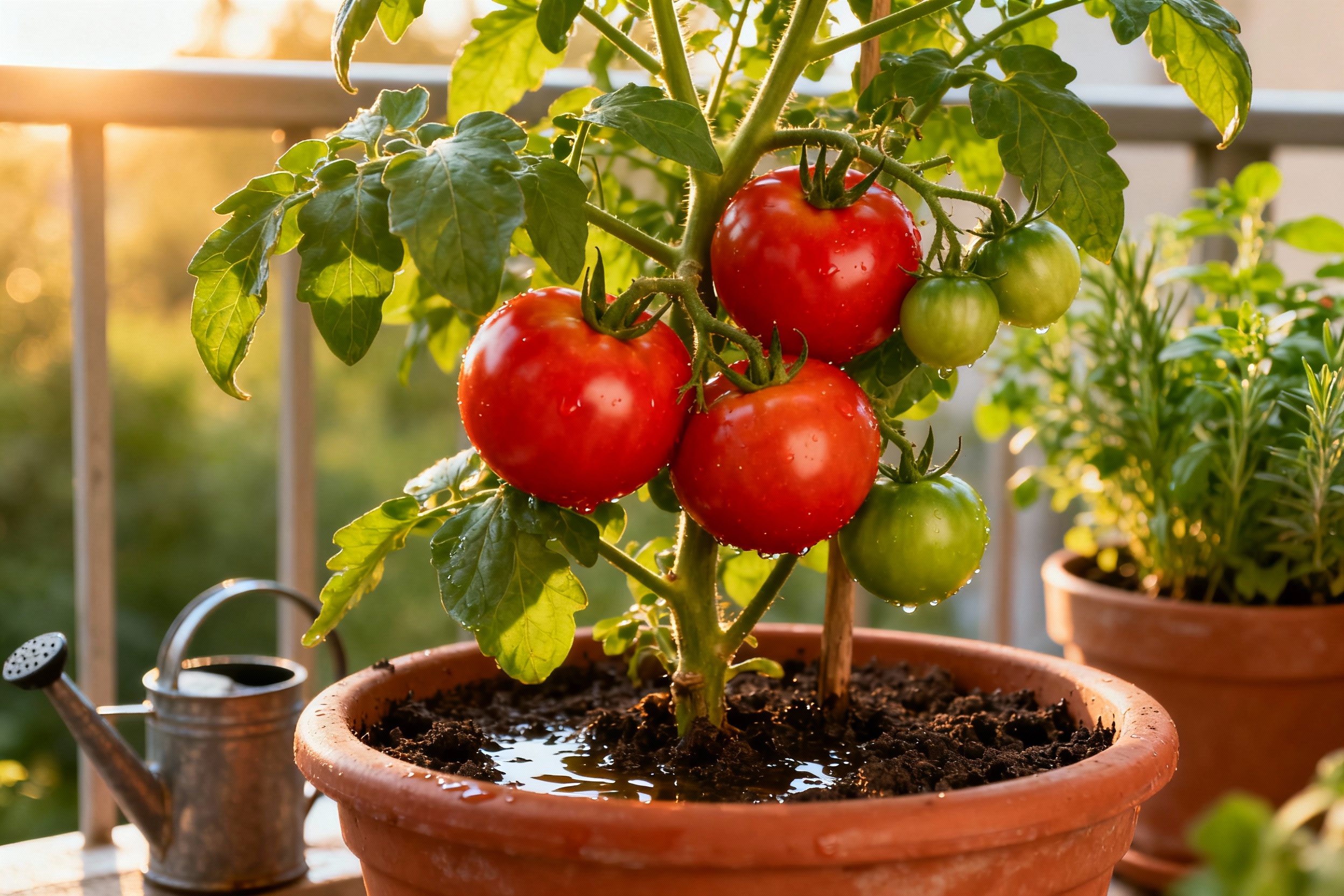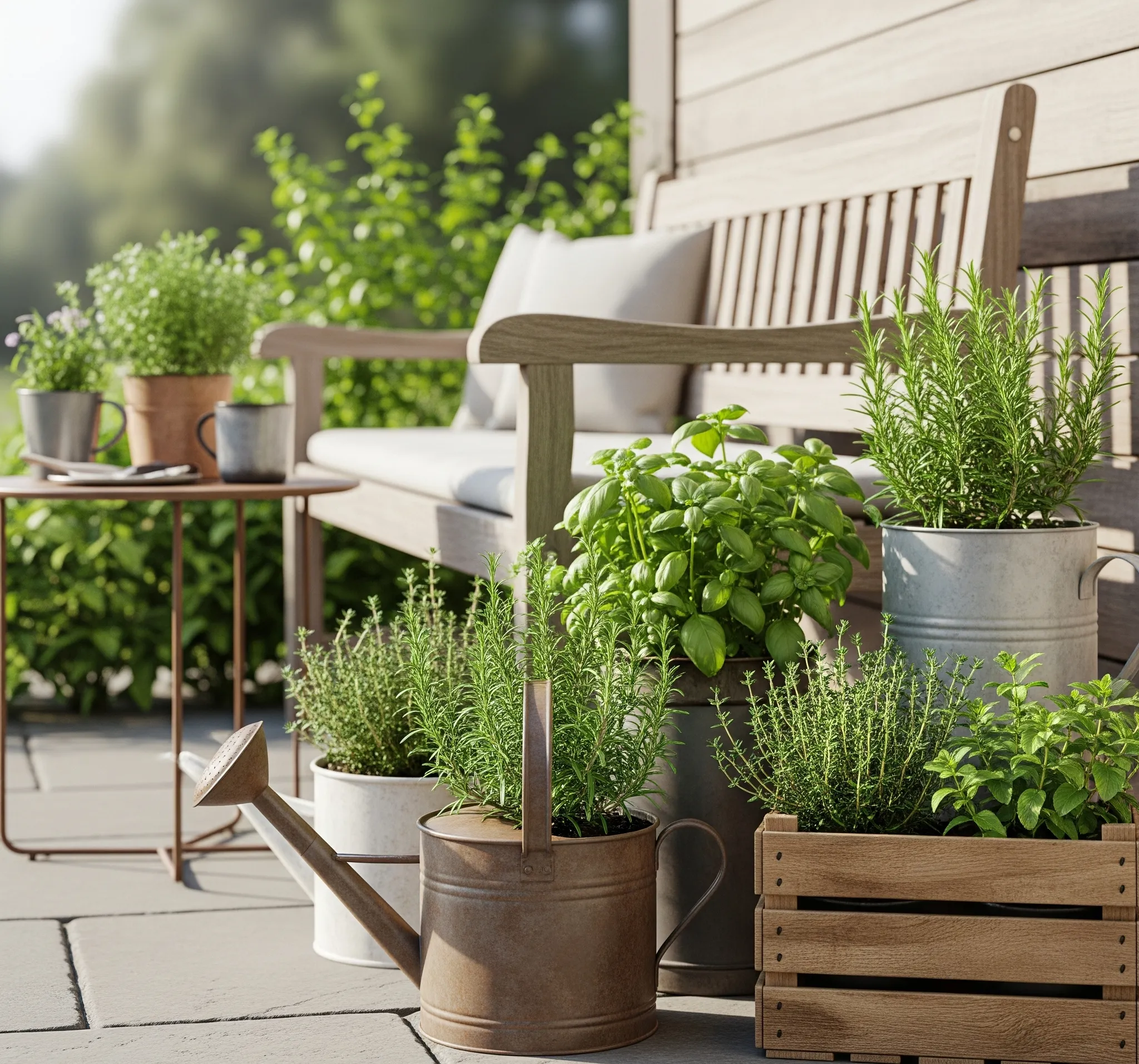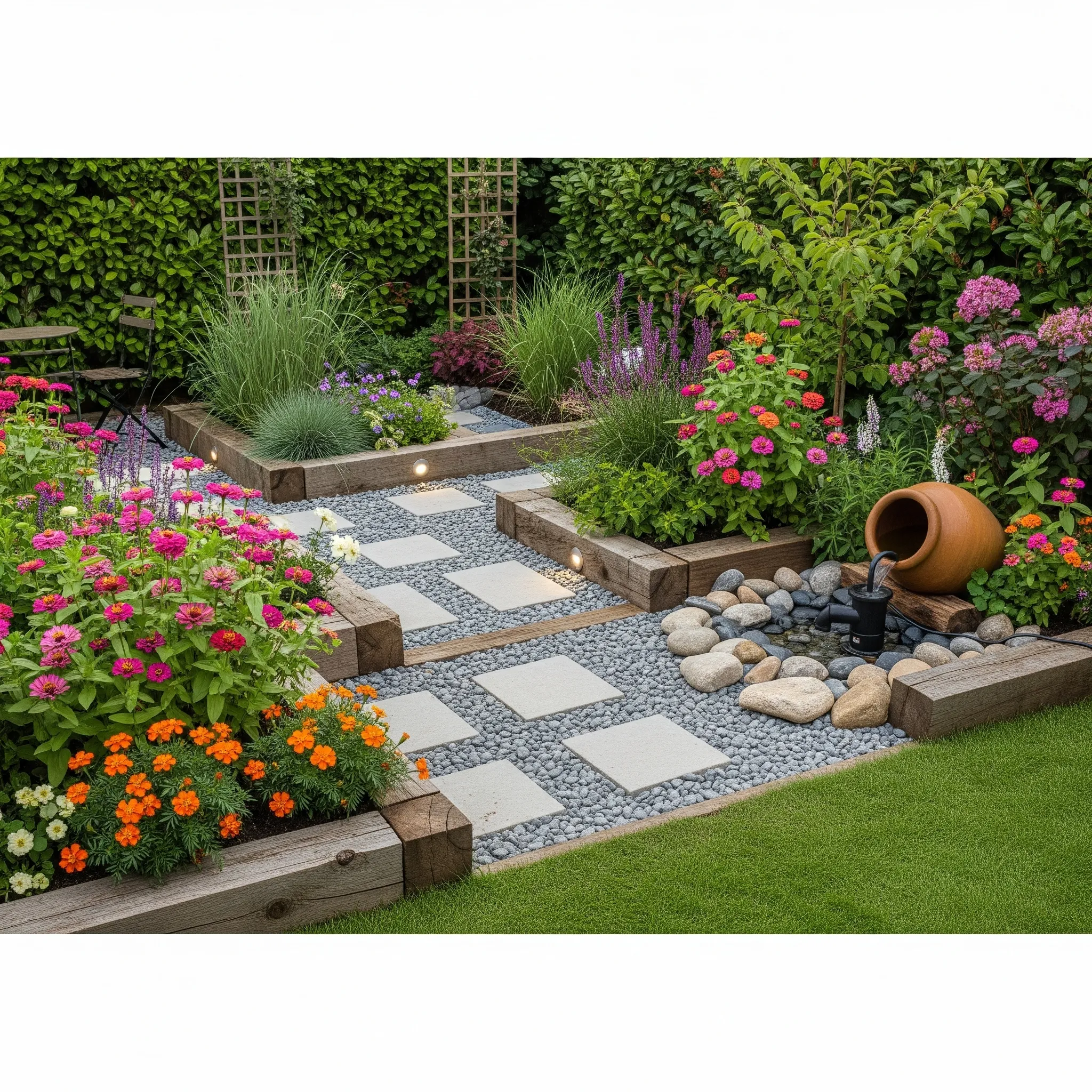You want tomatoes bigger than your fist and so flavorful they taste like summer on a fork? You can absolutely grow those—yes, even on a balcony, fire escape (legally, please), or tiny patio. It doesn’t require a farm or mystical compost spells.
Just a few smart choices, consistent care, and the confidence to ignore half the internet’s tomato myths.
Pick the Right Tomato for Small Spaces
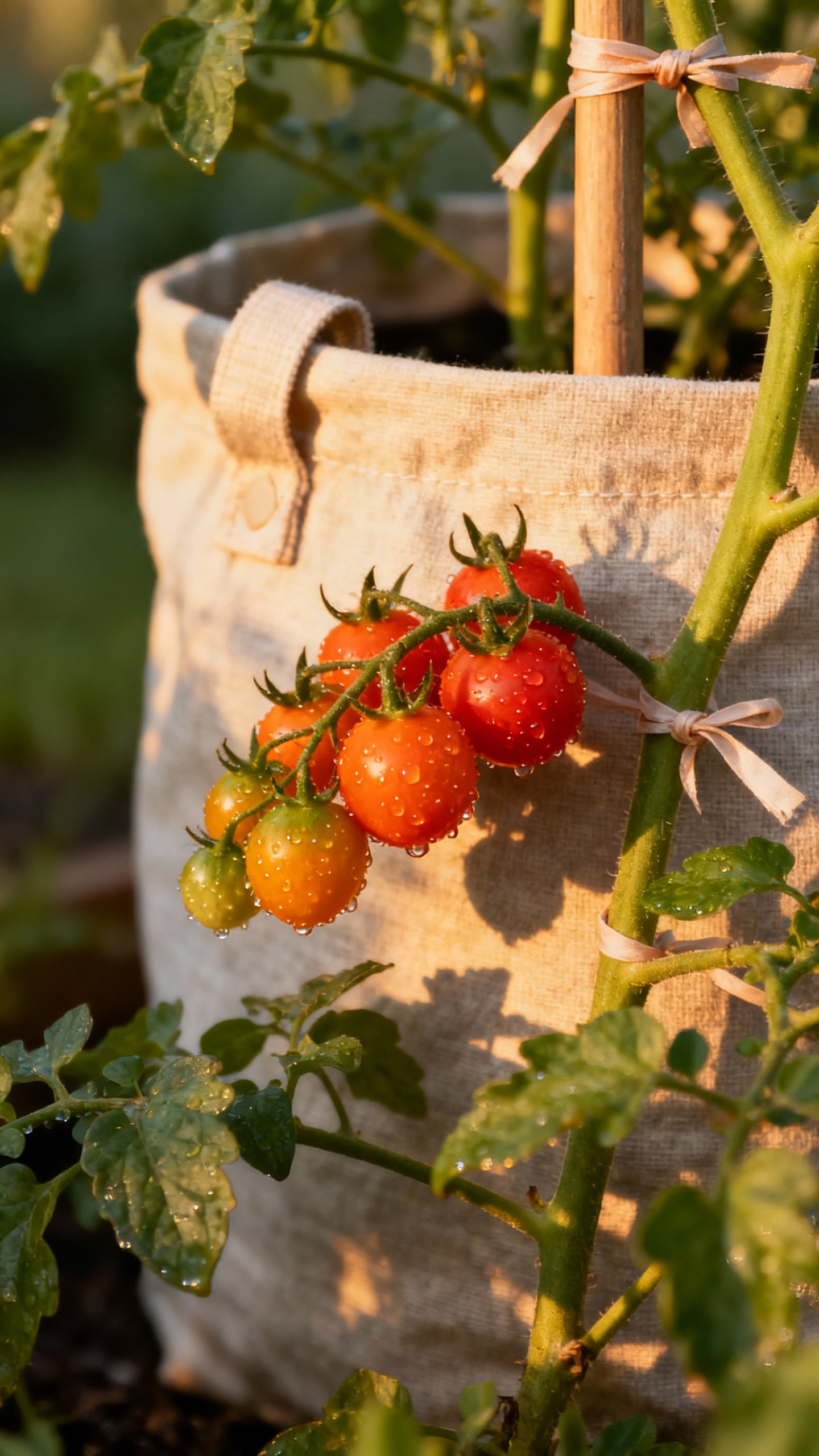
Choosing the right variety matters more than anything you’ll do later. Plant the wrong tomato in a small container and you’ll spend July apologizing to your neighbors for the vine invasion.
Determinate vs. indeterminate (and what that means for you)
- Determinate (bush): Compact plants that fruit in a big flush, then wrap it up. Great for containers and folks who want a quick, manageable harvest.
- Indeterminate (vining): Keep growing and producing until frost.
Amazing flavor and yield, but they need taller stakes and bigger pots. Not scary—just plan for it.
Varieties that deliver flavor in tight quarters
- ‘San Marzano’ or ‘Roma’ (semi-determinate): Saucy, meaty, surprisingly container-friendly with support.
- ‘Celebrity’ (determinate): Reliable, tasty slicer. A true overachiever.
- ‘Sun Gold’ (indeterminate): Candy-sweet cherry.
You’ll eat them before they hit the kitchen. Worth the bigger pot.
- ‘Patio Princess’ or ‘Totem’ (determinate): Bred for pots, solid flavor for small spaces.
Pro tip: Heirlooms taste unreal but can be fussy. If you’re new, start with one heirloom max and one reliable hybrid.
IMO, ‘Black Krim’ in a big pot equals summer bragging rights.
Choose Containers That Don’t Cramp Their Roots
Your tomato’s root zone determines your fruit size. Small pot = stunted plant = meh tomatoes. Let’s not do that.
- Size: 5-gallon minimum for determinates; 10–15 gallons for indeterminates.
Bigger pot = steadier moisture = better flavor.
- Material: Fabric grow bags drain well and keep roots happy. Plastic works but avoid black in blazing heat (it cooks roots). Terra cotta looks cute but dries fast—water like a hawk.
- Drainage: At least 4–6 holes in the bottom.
Tomatoes hate wet feet more than you hate soggy fries.
Soil matters—don’t use “dirt”
- Use a high-quality potting mix—light and well-draining. Avoid garden soil in pots; it compacts and suffocates roots.
- Amend for flavor and structure: Mix in compost (20–30%), a handful of worm castings, and perlite for airflow.
- Skip moisture crystals unless you live in the desert. You want consistent moisture, not mud.
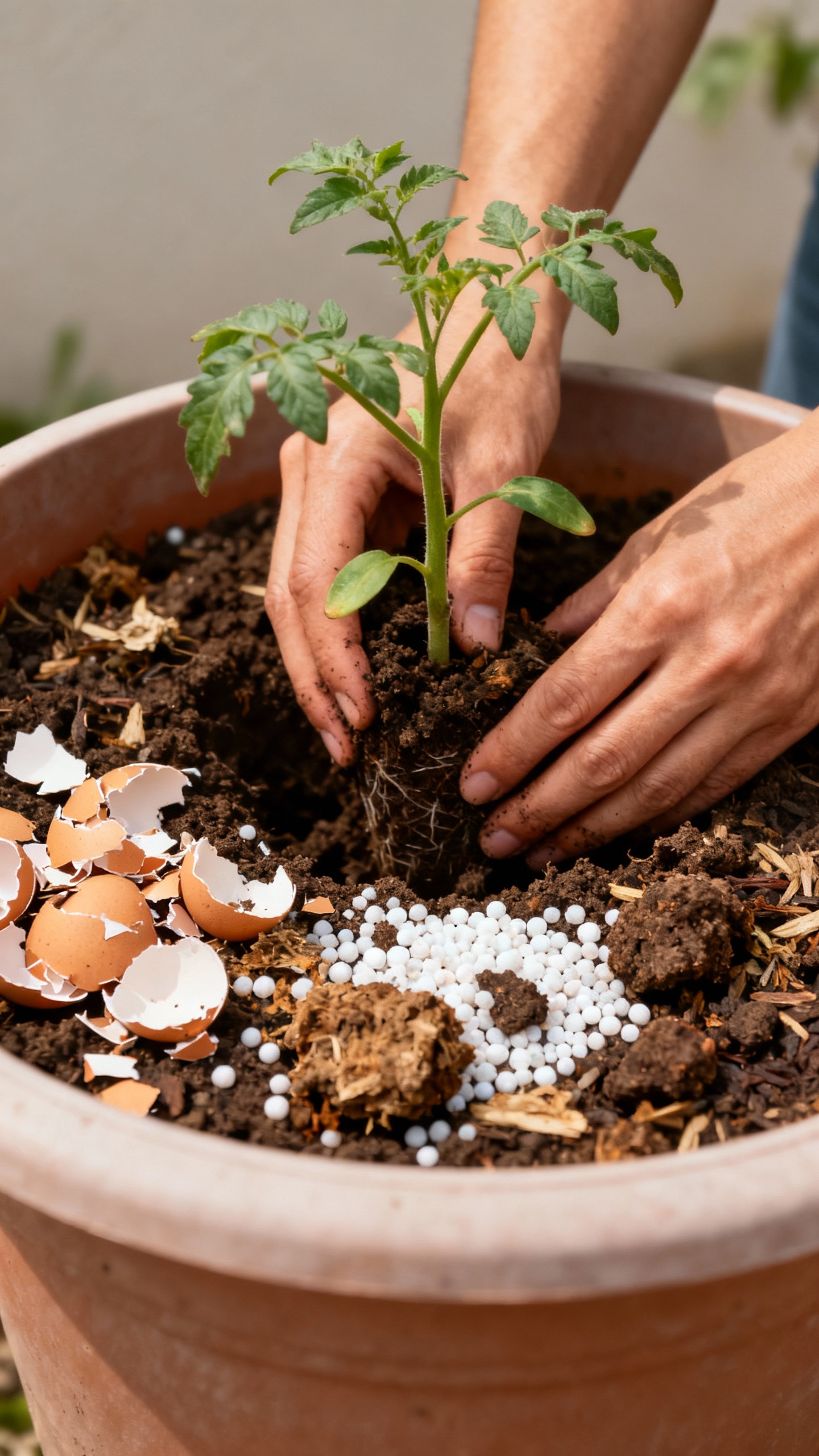
Sun, Heat, and Airflow: The Flavor Trifecta
You can’t fake sunlight.
Tomatoes need it like toddlers need snacks.
- Sunlight: 6–8 hours minimum, 8+ for big, intense flavor. South-facing is ideal; west works but watch heat.
- Heat: Tomatoes love warmth but hate extremes. Flower drop happens above 90–95°F midday.
Provide afternoon shade cloth if needed.
- Airflow: Space plants 18–24 inches apart and don’t jam them in corners. Good airflow reduces disease and keeps leaves dry.
Quick hack: Set pots on rolling plant caddies and chase the sun like a cat in a sunbeam.
Planting Like a Pro
Strong plants come from strong starts. Give them what they need from day one.
- Harden off seedlings for 5–7 days.
Start with 1–2 hours outside, then increase daily. No sunburnt divas.
- Plant deep: Bury the stem up to the first set of true leaves. Tomatoes grow roots along buried stems = sturdier plant.
- Add slow-release fertilizer to the hole and a handful of crushed eggshells or gypsum if blossom end rot haunted you last year.
- Water in thoroughly to settle roots and eliminate air pockets.
FYI: Install your stake or cage at planting.
Don’t wait until the plant turns into an octopus.
Support, Pruning, and Training (A Little Tough Love)
Good structure = bigger fruit, fewer problems. Think of it like gym class for plants—mildly annoying but worth it.
- Support: Use a sturdy tomato cage for determinates; a tall stake, trellis, or string line for indeterminates. Tie with soft ties every 6–8 inches.
- Prune smart: Remove suckers on indeterminates below the first flower cluster to focus energy.
For determinates, only prune lightly—don’t scalp them.
- Strip lower leaves: Once the plant sets fruit, remove leaves touching soil to reduce disease splash.
Blossom set hacks
- Shake the flowers gently at midday to help pollination (self-pollinating but a little nudge helps).
- Keep temps stable by mulching and watering on schedule. Stress equals fewer fruits.
Watering and Feeding: The Flavor Engine
Want tomatoes that taste like tomato? Manage water and nutrients consistently.
Not obsessively—consistently.
Watering rules that actually work
- Deep, consistent watering: Aim for 1–1.5 inches per week, adjusted for heat. In containers, that usually means daily in hot weather, every 2–3 days in mild temps.
- Check moisture: Stick your finger 2 inches down. Dry?
Water. Damp? Wait.
Fancy moisture meters work too, but your finger is free.
- Water at the base in the morning. Wet leaves invite disease; nighttime watering invites drama.
- Mulch with straw, shredded leaves, or coco chips to keep roots cool and moisture steady.
Feeding schedule (simple and effective)
- Baseline: Mix slow-release organic fertilizer into the potting mix at planting.
- Growth phase (weeks 2–4): Feed every 10–14 days with a balanced liquid feed (e.g., 4-4-4 or 5-5-5).
- Flower/fruit phase (after first flowers): Switch to a lower nitrogen, higher potassium fertilizer to boost fruit size and flavor.
- Calcium: Prevent blossom end rot with consistent moisture; supplement with calcium only if your water/soil tests low.
IMO: Compost tea gives a gentle boost without overfeeding. Your plant won’t get ripped, but it’ll feel great.
Common Problems (And Chill Solutions)
Tomatoes come with drama.
You’ll handle it.
- Blossom end rot: Black, sunken ends on fruit. Usually uneven watering. Fix the watering, mulch, and be patient—next fruits often turn out fine.
- Yellowing leaves: One or two at the bottom?
Normal. Whole plant? Check watering and feeding.
Don’t panic-prune healthy green leaves.
- Cracking fruit: Big rain or overwatering after a dry spell. Keep moisture consistent and harvest near-ripe fruits before storms.
- Aphids/whiteflies: Blast with water, then use insecticidal soap or neem in the evening. Encourage ladybugs if you can.
- Fungal spots: Remove affected leaves, improve airflow, use a copper or bio-fungicide if it spreads.
Water the soil, not the leaves.
Harvesting for Maximum Flavor
You made it. Don’t blow it at the finish line.
- Pick when fully colored and slightly soft to the touch. Vine-ripened tastes best, but don’t let them split on the plant.
- Counter, not fridge: Store at room temp.
Refrigeration dulls flavor, unless the tomato is already cut or overripe.
- Clip, don’t yank to avoid tearing stems. Keep a little bit of stem attached for a longer shelf life.
FYI: If frost threatens, pick mature green tomatoes and let them ripen in a paper bag indoors. Not quite summer-perfect, but still tasty.
FAQs
Can I grow tomatoes indoors?
Yes, but you need serious light.
Use a full-spectrum LED grow light for 12–16 hours daily, and choose compact or dwarf varieties. Hand-pollinate flowers by gently tapping or using a small brush.
How big should the pot be for cherry tomatoes?
Go for at least 5–7 gallons for determinate cherries and 10 gallons for indeterminates like ‘Sun Gold.’ Bigger pots mean fewer watering headaches and sweeter fruit.
Do I need to prune determinate tomatoes?
Only a little. Remove damaged leaves and any suckers below the first flower cluster if it’s crowded, but keep most growth.
Determinates set their fruit all at once, so aggressive pruning reduces yield.
Why are my flowers dropping off?
Extreme temps, inconsistent watering, or too much nitrogen cause blossom drop. Keep temps moderated with shade cloth in heat waves, water consistently, and switch to a bloom/fruiting fertilizer.
What’s the best organic fertilizer for flavor?
A balanced organic base (like 4-4-4) early on, then a bloom formula higher in potassium and phosphorus. Add compost and a touch of kelp or fish hydrolysate for micronutrients and resilience.
Can I reuse potting mix next year?
Yes, but refresh it.
Remove old roots, add 30–50% new mix or compost, and rotate crops to avoid disease buildup. If disease hit hard, replace entirely and sanitize containers.
Conclusion
Big, flavor-packed tomatoes in small spaces come down to smart variety choices, roomy containers, solid sunlight, and consistent water and feeding. Support them, prune a bit, and don’t overthink every leaf.
Do those basics, and you’ll eat tomatoes so good you’ll side-eye grocery store ones forever. IMO, that’s a beautiful kind of petty.
